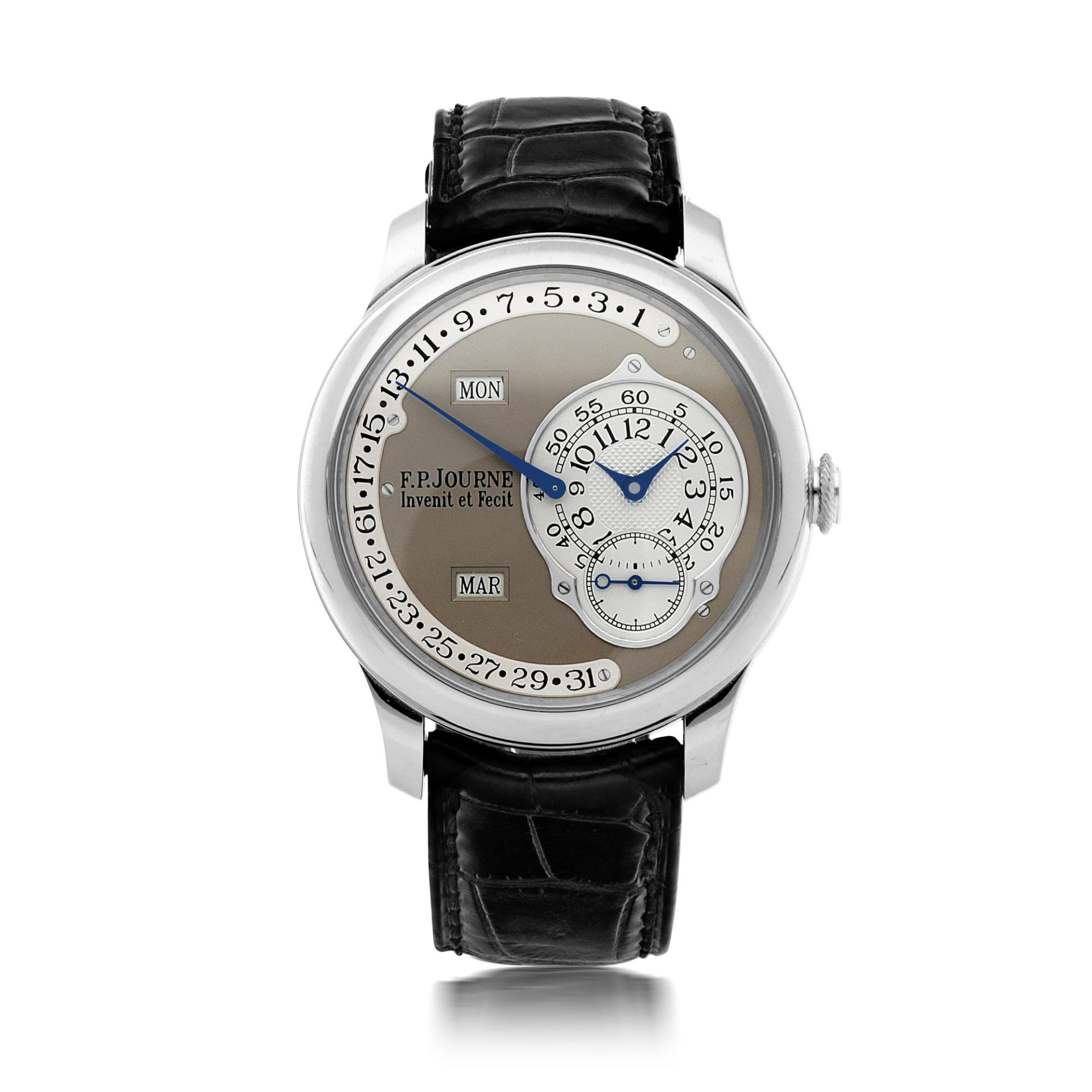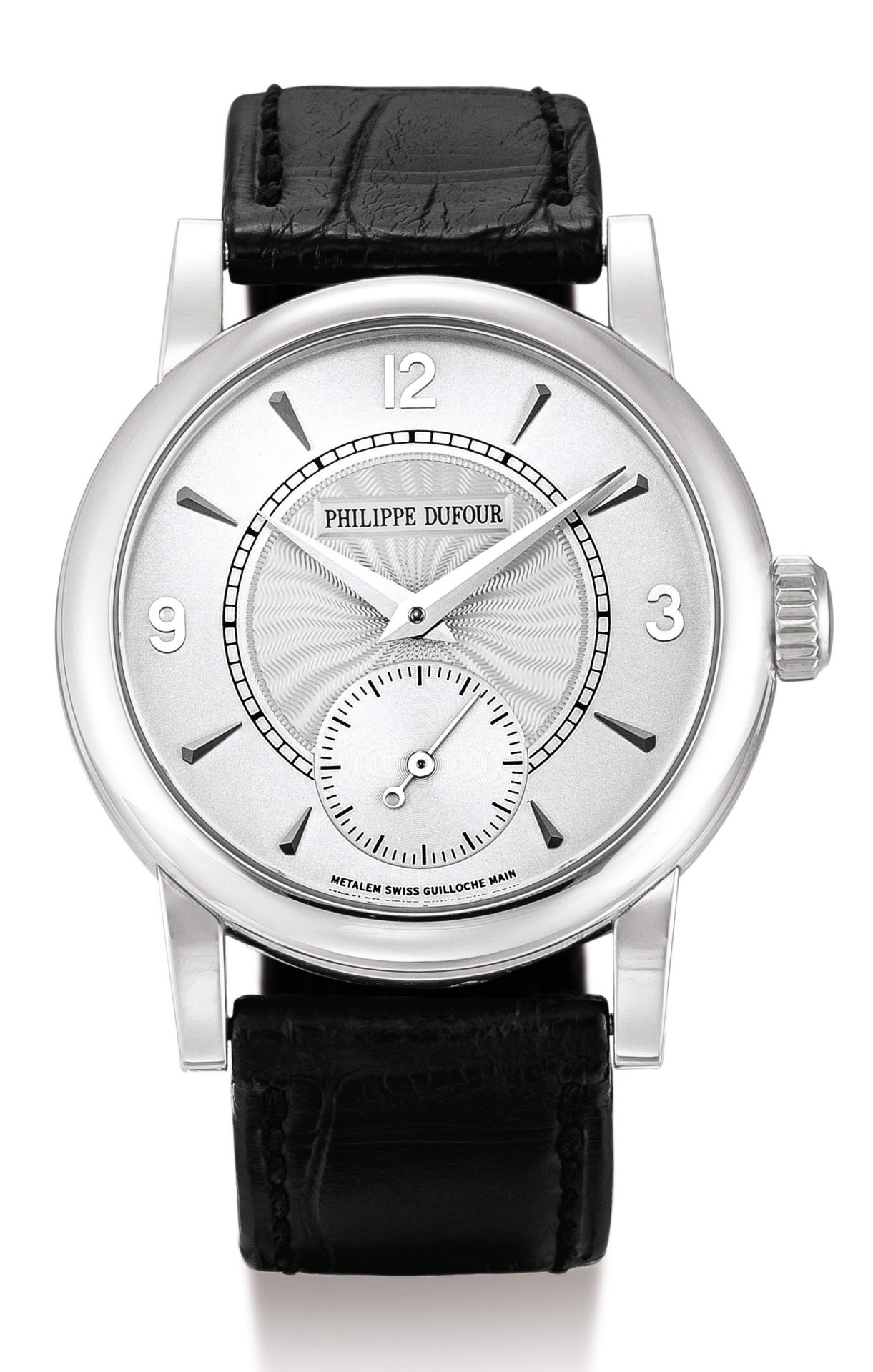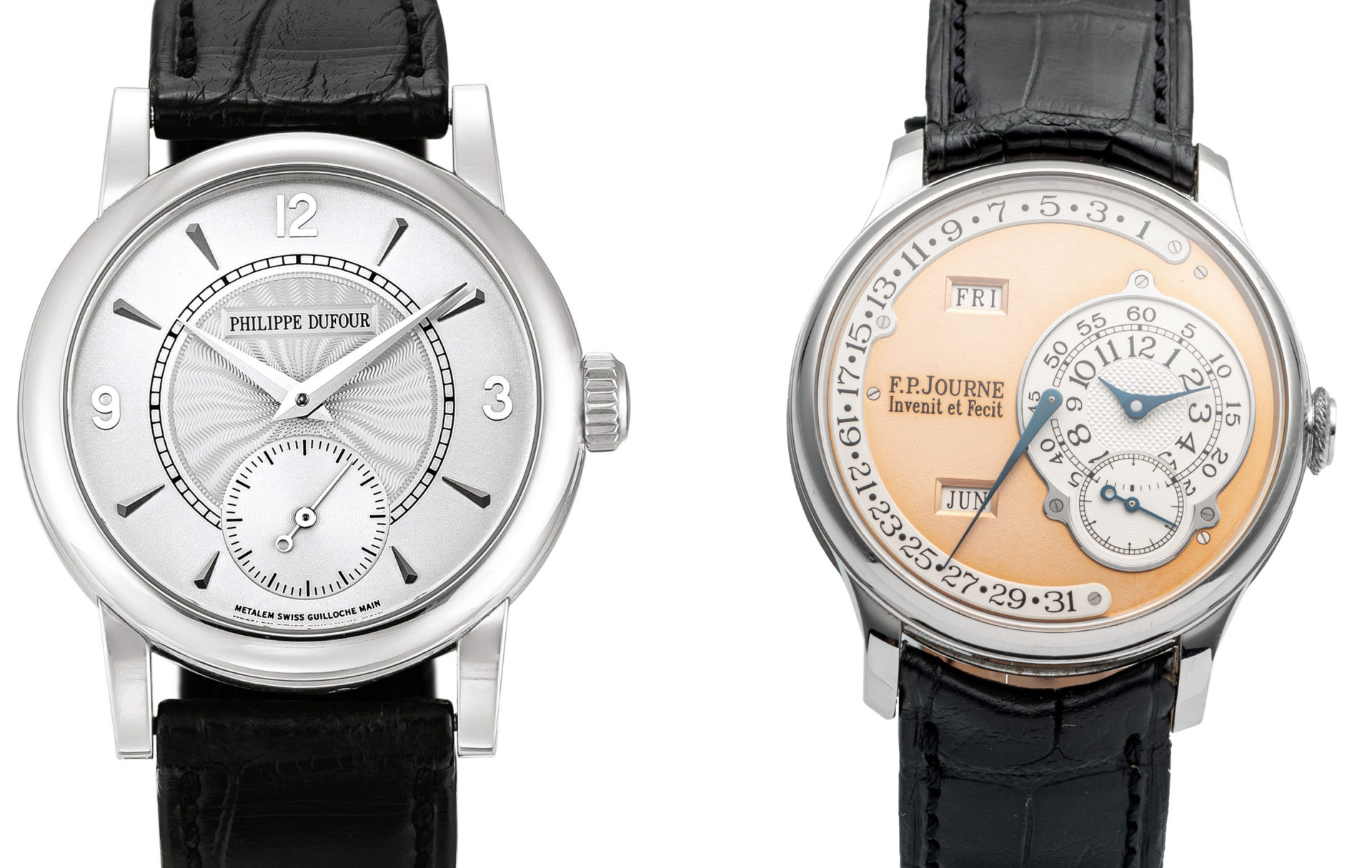Too many in the prestige watch industry have forgotten that scarcity and exclusivity increase desirability and outright lust among collectors, which is why, as Simon de Burton reports, marques like Philippe Dufour and F. P. Journe are challenging established giants for premium prices at auction.
Anyone who follows the watch auction scene will know that low-volume ‘independent’ makes are finding their way onto the post-sale top-10 lot lists with increasing regularity.
For years, the 10 most expensive watches at any noteworthy sale were almost invariably made by Patek Philippe or Rolex, but the increasing perception of certain much younger, high-end dial names as having cast-iron investment potential means that the previous duopoly is slowly crumbling.
At the most recent major auction to have taken place prior to this issue going to press – Antiquorum’s January 24 sale in Monaco – both the top lot and the fifth best-seller were by F.P Journe, the former being a platinum-cased 2004 Octa Calendrier with a golden dial and brass movement that more than doubled its high estimate to fetch Euros 188,500.
Few would deny the quality, desirability and beauty of Journe watches, and many believe some have been undervalued on the residual market for years. But the recent sky-rocketing prices for many models does seem remarkable.
Only last November, for example, Sotheby’s sold a similar platinum Octa Calendrier ‘in used but attractive condition’ (and with an arguably less desirable grey dial and later-type gold movement) for Sfr 63,000. Which beggars the question, was the Antiquorum watch really three times better? After all, it was in less than mint condition and there are believed to be 2,000 brass movement versions of the model in circulation, so it hardly qualified as ultra-rare.

As someone who has too often sat on his hands at auctions and failed to snap-up watches that, ‘with the benefit of hindsight,’ were ridiculously cheap (I even failed to bid at a 2010 Dreweatts sale of 100 new Rolex watch heads seized by Customs and Excise, at which Submariners were being hammered-down for £1,800) I undoubtedly qualify as a ‘risk averse’ buyer.
But even carefree types with money to burn might want to think twice before riding the pre-owned Journe bandwagon while prices seem to be rising at such a surprising rate – especially when there is talk of the market evolving in a way that is perhaps not entirely ‘organic’.
Google ‘F.P. Journe’ and you might well turn-up an encouraging article entitled ‘ Eight things you didn’t know about F.P. Journe’ on the blog of U.S. dealer Govberg watches. Govberg is, of course, an authorised Journe retailer—- as well as being the owner of pre-owned watch etailer Watchbox which, at time of writing, was offering no fewer than 32 pre-owned Journes, ranging in price from a quartz-based Elegante for $19,950 up to a platinum Tourbillon Souverain for $189,500.
Danny Govberg says that it was only a matter of time before collectors caught onto the value of Journe.
He only produces around 700 watches per year and most references are made in tiny quantities that have long waiting lists. They have the horological value of a Patek Philippe complication but are made in far smaller quantities by a living legend of a watchmaker and can be bought new (if you can find them) for a fraction of the price, Mr Govberg argues.
Prices may be rising rapidly for F. P. Journe watches, but that is only beginning to represent fair value, in Mr Govberg’s opinion.

It’s tempting to look at auction prices as accurate benchmarks of value, based on the idea that buyers are all passionate and scholarly horophiles willing to pay whatever it takes to own a dream watch from a hero maker.
Doubtless many buyers (well, some) really are — but don’t believe that every auction isn’t influenced by cartels of dealers (and even makers) bidding, underbidding, consigning and manipulating to create what amounts to a watch collecting minefield for the innocent amateur.
And it’s the values of watches by contemporary, independent brands that are currently most open to being pushed upwards by such deft manoeuvring of the market.
With that in mind, look at the interesting case of Philippe Dufour, the septuagenarian watch maker regularly dubbed ‘a living legend’ on internet forums. His ‘Simplicity’ watch is famed for ‘simply’ displaying hours, minutes and seconds while being finished inside and out to the Nth degree, resulting in what can fairly be described as a horological work of art.
When Dufour began making the Simplicity at the dawn of the millennium, he set-out to produce 100 examples, doubling the number when, after a slow start, the superlative standard of his work came to be more widely appreciated.
By 2014 he had produced 200 watches, all in case sizes of either 34mm or 37mm and made from white or rose gold or platinum and (mostly) with white lacquer or silver guilloche dials.
Since a buyer was lined-up for each watch before it was completed, the full variation of specifications is probably known only to Dufour, as are individual prices – but it is thought that he was initially selling them for around Sfr25,000 at the beginning and Sfr40,000 at the end .
By 2016, however, Simplicitys were changing hands at auction for as much as $250,000, and prices now exceed $400,000.
No wonder, then, that Dufour has returned to his bench to knock-out another 21 Simplicitys following the announcement last October that Lebanese jeweller, super collector and F.P. Journe retailer Claude Sfeir had persuaded him to get back on the job by offering to take care of ‘the commercial side’ of the business.
The alliance is certainly working so far. Number ’00’ of the new series sold for a record Sfr1.3m at Phillips in November, prompting an article about the partnership in the New York Times in which it was revealed that so many people had expressed an interest in owning one of the remaining 20 watches that half of the buyers would be drawn from a lottery – which attracted more than 155,000 applicants.
Sfeir says he was moved to enter into the arrangement ‘not as business partners, but as family’ in order to enable Dufour to reap rewards that he apparently missed out on as a result of underselling the original run of Simplicitys, only to see buyers move them on for many multiples of what he had charged.
But having been made horribly cynical by more than three decades in journalism, it would surprise me if Dufour hadn’t had the sense to squirrel away his own stash of Simplicitys for future sale after completing the first 200 – the Phillips catalogue even states that he ‘made a few bonus pieces for those who are particularly keen supporters’ (presumably not the same people who have already reaped those handsome profits).
That same cynicism also makes me doubtful that Sfeir was prompted to instigate the deal purely to ensure Dufour can put food on the table. Sfeir is, after all, a man whose business acumen has brought him sufficient wealth to allow him to confidently open the bidding at Sfr5m for the Patek Philippe that fetched Sfr31m at the Only Watch charity sale in 2019. Admittedly he wasn’t the eventual buyer, but at least he managed to snap-up a Tudor Black Bay at the same sale – for a bargain Sfr350,000.
A call to a spokesperson for the duo revealed that, while the 20 watches had all been allocated, Sfeir was not ready to reveal how much the buyers had agreed to pay – but we can safely assume that it will be a whole lot more Sfr 40,000. In fact, rumour has it that the first 10 have been priced at Sfr700,000 apiece.
Equally, Sfeir prefers to keep mum about how many Dufours already reside in his personal collection, and what might be in store for the future of the partnership.
Perhaps more tellingly my colleague Nick Foulkes this week revealed on the Financial Times website that Sfeir and Dufour are currently working on ‘the world’s most expensive jewellery watch’.
The fact that (according to the article) the inspiration came from 2014 when ‘the pair’ spotted Graff’s $55m ‘Hallucination’ – carrying 110 carats of diamonds and also touted as ‘the most valuable watch ever created’ – shows that the Sfeir/Dufour partnership was forged several years ago.
The Dufour jewellery watch will have a 34mm platinum case, diamond indexes and a design (penned by London tattooist Mo Coppoletta) that incorporates an array of coloured stones collected by Sfeir during the past 40 years. It will be supplied with a suite of jewellery pieces and will be wearable as a bracelet, as a pendant or on a leather strap with a range of interchangeable gem-set buckles.
Dufour is also preparing a unique Simplicity for donation to this year’s Only Watch charity auction taking place in November. It will inevitably make seven figures, and values for existing and future watches made by ‘the living legend’ will inevitably be further boosted as a result.
Whether all this will be taken as being typical of the sort of things that grow out of a passion for watches or proof of a market that is being cleverly choreographed, only time will tell.
In any event, it seems that M Dufour and his commercial partner can certainly look forward to a happy and very comfortable retirements.

